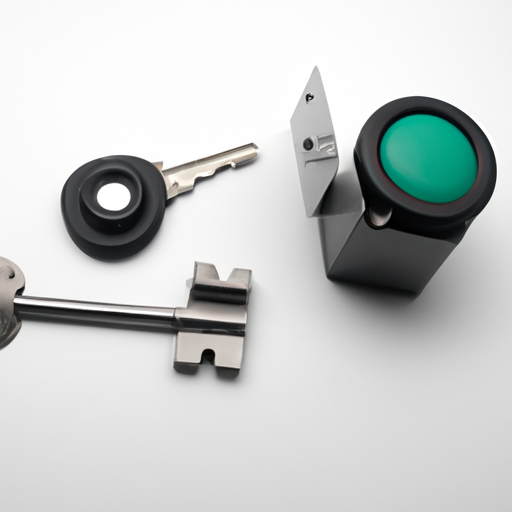
Key lock switches are a popular type of switch used in a variety of applications to control access to certain functions or equipment. These switches require a physical key to be inserted and turned in order to activate or deactivate the switch. There are several popular types of key lock switches available on the market, each with its own unique features and benefits. In this article, we will explore some of the most common types of key lock switches and their uses.1. Rotary key lock switches: Rotary key lock switches are one of the most common types of key lock switches. These switches feature a cylindrical key that is inserted into a slot and then turned to activate or deactivate the switch. Rotary key lock switches are often used in industrial applications, such as controlling machinery or equipment, as well as in security systems to control access to certain areas.2. Push-button key lock switches: Push-button key lock switches are another popular type of key lock switch. These switches feature a button that is pressed to activate or deactivate the switch, along with a key that is used to lock or unlock the button. Push-button key lock switches are commonly used in automotive applications, such as controlling the ignition or starting system of a vehicle.3. Toggle key lock switches: Toggle key lock switches are a type of key lock switch that features a lever or toggle switch that is moved up or down to activate or deactivate the switch. These switches are often used in electronic devices, such as computers or gaming consoles, to control power or other functions. Toggle key lock switches are also commonly used in security systems to control access to certain areas.4. Keyed selector switches: Keyed selector switches are a type of key lock switch that features multiple positions or settings that can be selected using a key. These switches are often used in industrial applications to control different functions or modes of operation. Keyed selector switches are commonly used in machinery or equipment that requires multiple settings or configurations.5. Keyed emergency stop switches: Keyed emergency stop switches are a type of key lock switch that is used to quickly shut down equipment or machinery in case of an emergency. These switches feature a large red button that is pressed to stop the equipment, along with a key that is used to reset the switch. Keyed emergency stop switches are commonly used in industrial settings to ensure the safety of workers and prevent accidents.In conclusion, key lock switches are a versatile and popular type of switch that is used in a wide range of applications to control access to certain functions or equipment. There are several popular types of key lock switches available on the market, each with its own unique features and benefits. Whether you need to control machinery, equipment, or access to certain areas, there is a key lock switch that is right for your needs.
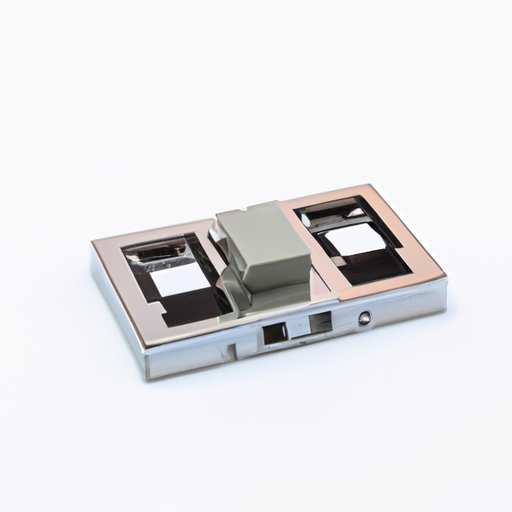
When it comes to choosing the right spot toggle switches for your needs, there are several factors to consider. Toggle switches are commonly used in a variety of applications, from industrial machinery to household appliances. They are a type of switch that is operated by a lever or toggle, which can be flipped up or down to turn a circuit on or off.There are several different types of toggle switches available on the market, each with its own unique features and specifications. In this article, we will discuss some of the key factors to consider when choosing the right spot toggle switches for your specific needs.1. Type of ApplicationThe first thing to consider when choosing spot toggle switches is the type of application in which they will be used. Different applications may require different types of toggle switches, depending on factors such as the voltage and current rating, the size and shape of the switch, and the environmental conditions in which it will be used.For example, if you are using toggle switches in an industrial setting where they will be exposed to harsh conditions such as dust, moisture, or extreme temperatures, you will need to choose switches that are designed to withstand these conditions. On the other hand, if you are using toggle switches in a residential setting, you may not need switches that are as rugged or durable.2. Voltage and Current RatingAnother important factor to consider when choosing spot toggle switches is the voltage and current rating of the switch. The voltage rating of a switch indicates the maximum voltage that the switch can safely handle, while the current rating indicates the maximum current that the switch can safely carry.It is important to choose toggle switches with the appropriate voltage and current ratings for your specific application to ensure that they will operate safely and reliably. Using switches with insufficient ratings can lead to overheating, arcing, or even electrical fires, so it is crucial to choose switches that are rated for the voltage and current levels of your circuit.3. Number of Poles and ThrowsToggle switches come in a variety of configurations, including single-pole, double-pole, and triple-pole switches. The number of poles refers to the number of separate circuits that the switch can control, while the number of throws refers to the number of positions in which the switch can be toggled.For example, a single-pole, single-throw (SPST) switch controls one circuit and has two positions (on and off), while a double-pole, double-throw (DPDT) switch controls two circuits and has three positions (on, off, and on). The number of poles and throws you need will depend on the specific requirements of your application, so be sure to choose switches that are configured appropriately.4. Size and ShapeThe size and shape of the toggle switch are also important considerations when choosing spot toggle switches. Toggle switches come in a variety of sizes and shapes, ranging from small, compact switches for tight spaces to larger, more robust switches for heavy-duty applications.It is important to choose switches that are the right size and shape for your specific application to ensure that they will fit properly and function correctly. Be sure to consider factors such as the mounting options, the space available for the switch, and any other components that the switch will need to interface with.5. Environmental ConditionsFinally, it is important to consider the environmental conditions in which the toggle switches will be used. Some toggle switches are designed to withstand harsh conditions such as dust, moisture, vibration, and extreme temperatures, while others are more suited for indoor or residential use.If you are using toggle switches in an industrial setting or outdoor environment, be sure to choose switches that are rated for these conditions to ensure that they will operate reliably. Look for switches that are sealed or waterproof, have rugged construction, and are designed to withstand the specific environmental challenges of your application.In conclusion, choosing the right spot toggle switches for your needs requires careful consideration of factors such as the type of application, voltage and current rating, number of poles and throws, size and shape, and environmental conditions. By taking these factors into account and selecting switches that are well-suited to your specific requirements, you can ensure that your toggle switches will operate safely and reliably in your application.
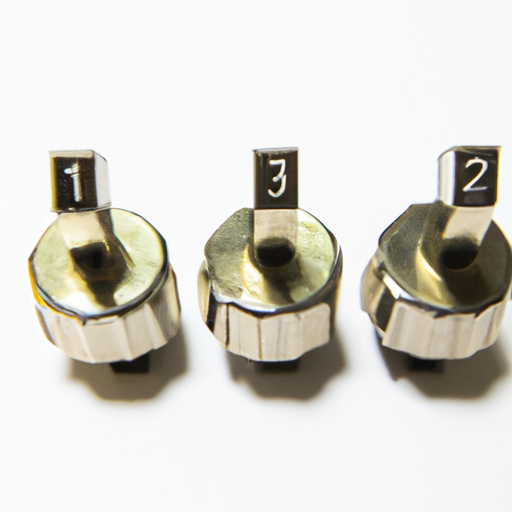
Toggle switches are a type of electrical switch that is commonly used in a variety of applications, from household appliances to industrial machinery. These switches are designed to control the flow of electricity by toggling between an on and off position. They are simple to use and reliable, making them a popular choice for many different industries.The market size of toggle switches is significant, with a wide range of manufacturers producing these essential components. According to a report by Market Research Future, the global toggle switch market is expected to reach a value of $1.5 billion by 2023, growing at a CAGR of 6% during the forecast period. This growth is driven by the increasing demand for toggle switches in various industries, including automotive, aerospace, electronics, and telecommunications.One of the key factors driving the growth of the toggle switch market is the increasing adoption of automation and smart technologies in various industries. Toggle switches are essential components in automated systems, allowing for easy control and operation of machinery and equipment. As industries continue to invest in automation to improve efficiency and productivity, the demand for toggle switches is expected to increase.The automotive industry is one of the largest consumers of toggle switches, with these components used in vehicles for a variety of functions, such as controlling lights, wipers, and power windows. With the growing demand for electric vehicles and advanced driver assistance systems, the market for toggle switches in the automotive sector is expected to expand significantly in the coming years.In the aerospace industry, toggle switches are used in aircraft for various functions, including controlling navigation systems, communication devices, and lighting. As the aerospace sector continues to grow, driven by increasing air travel and demand for new aircraft, the market for toggle switches is expected to see steady growth.The electronics industry is another major consumer of toggle switches, with these components used in a wide range of devices, from smartphones to computers. As consumers continue to demand smaller, more portable electronic devices with advanced features, the market for toggle switches in the electronics sector is expected to grow.The telecommunications industry is also a significant market for toggle switches, with these components used in networking equipment and communication devices. With the increasing demand for high-speed internet and advanced telecommunications services, the market for toggle switches in this sector is expected to see steady growth.Overall, the market size of toggle switches is significant, with a wide range of industries driving demand for these essential components. As automation and smart technologies continue to advance, the market for toggle switches is expected to grow, providing opportunities for manufacturers and suppliers in the coming years.
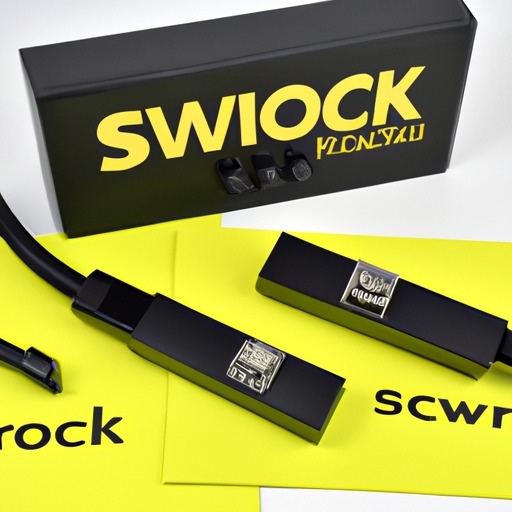
Rocker switches are a common type of electrical switch that is widely used in various applications, from household appliances to industrial machinery. They are easy to use, reliable, and durable, making them a popular choice for many different types of products.When it comes to training on rocker switches, there are several key considerations that should be taken into account to ensure that users are able to effectively and safely operate the switch. In this article, we will discuss some important training considerations for rocker switches.1. Understanding the BasicsThe first step in training on rocker switches is to ensure that users have a solid understanding of the basics of how the switch works. This includes understanding the different positions of the switch (on, off, and sometimes a middle position), as well as how to properly operate the switch to turn a device on or off.It is important to explain the concept of a rocker switch, which is a type of switch that rocks back and forth to change the position of the contacts inside the switch. This simple motion is what allows the switch to turn a device on or off.2. Safety ConsiderationsSafety should always be a top priority when training on rocker switches. Users should be made aware of any potential hazards associated with operating the switch, such as the risk of electric shock or fire if the switch is not used properly.It is important to emphasize the importance of following proper safety procedures when using rocker switches, such as ensuring that the switch is properly installed and wired, and that it is used in accordance with the manufacturer's instructions.Users should also be trained on how to safely troubleshoot any issues that may arise with the switch, such as a switch that is not working properly or is making unusual noises.3. Hands-On TrainingOne of the most effective ways to train users on rocker switches is through hands-on training. This can involve providing users with actual rocker switches to practice with, as well as simulating different scenarios in which the switch may need to be used.Hands-on training allows users to gain practical experience with the switch, which can help to reinforce their understanding of how it works and how to operate it safely. It also provides an opportunity for users to ask questions and receive feedback on their performance.4. Troubleshooting and MaintenanceIn addition to understanding how to operate the switch, users should also be trained on how to troubleshoot and maintain rocker switches. This includes knowing how to identify common issues with the switch, such as a loose connection or a faulty switch mechanism, and how to address these issues effectively.Users should also be trained on how to properly clean and maintain rocker switches to ensure that they continue to function properly over time. This can help to extend the lifespan of the switch and prevent unnecessary downtime or repairs.5. Compliance and RegulationsFinally, users should be made aware of any relevant compliance standards and regulations that apply to rocker switches. This may include safety standards set by organizations such as UL or CSA, as well as any specific regulations that apply to the industry in which the switch is being used.Training on compliance and regulations can help to ensure that users are aware of their responsibilities when using rocker switches, and that they are able to operate the switch in a safe and compliant manner.In conclusion, training on rocker switches is an important aspect of ensuring that users are able to effectively and safely operate these devices. By focusing on understanding the basics of how the switch works, emphasizing safety considerations, providing hands-on training, teaching troubleshooting and maintenance techniques, and educating users on compliance and regulations, organizations can help to ensure that users are well-equipped to use rocker switches in a safe and effective manner.
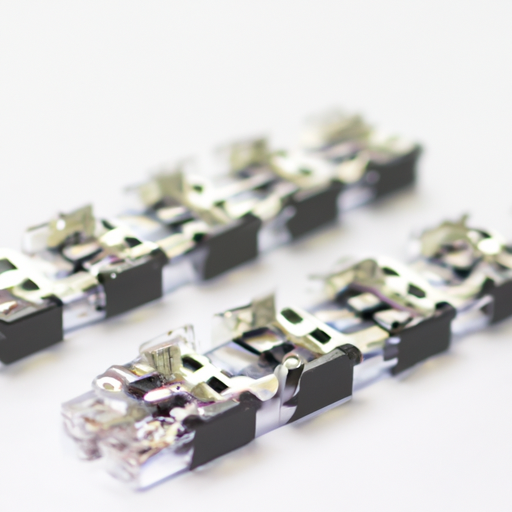
The DIP switch industry has been a staple in the electronics industry for decades, providing a simple and reliable way to configure and control various electronic devices. However, with the rise of more advanced technologies such as microcontrollers and software-based configuration tools, the demand for DIP switches has been on the decline in recent years. Despite this, the industry is still alive and well, with manufacturers continuing to produce DIP switches for a variety of applications.DIP switches, short for Dual Inline Package switches, are small electronic components that consist of a series of tiny switches arranged in a dual inline package. These switches can be toggled on or off to configure the settings of a device, such as selecting different operating modes or setting specific parameters. DIP switches are commonly used in a wide range of electronic devices, including computers, printers, routers, and industrial control systems.One of the main advantages of DIP switches is their simplicity and reliability. Unlike software-based configuration tools, DIP switches do not require any additional programming or setup, making them easy to use and understand. Additionally, DIP switches are non-volatile, meaning that their settings are retained even when the power is turned off, making them ideal for applications where settings need to be preserved across power cycles.Despite these advantages, the demand for DIP switches has been declining in recent years due to the rise of more advanced technologies. Microcontrollers, for example, have become increasingly popular for configuring and controlling electronic devices, offering greater flexibility and functionality than DIP switches. Additionally, software-based configuration tools have made it easier for manufacturers to customize and update device settings remotely, reducing the need for physical switches.As a result of these trends, many manufacturers have shifted their focus away from DIP switches and towards more advanced technologies. Some companies have even discontinued their DIP switch product lines altogether, choosing to invest in newer technologies instead. However, this does not mean that the DIP switch industry is dead – there are still many applications where DIP switches are the preferred choice due to their simplicity and reliability.One area where DIP switches continue to be widely used is in industrial control systems. These systems often require precise configuration settings that need to be easily accessible and tamper-proof, making DIP switches an ideal choice. Additionally, DIP switches are commonly used in legacy devices that were designed before the advent of microcontrollers, where retrofitting newer technologies may not be feasible or cost-effective.In addition to industrial applications, DIP switches are also used in consumer electronics, such as remote controls and garage door openers. These devices often require simple configuration settings that can be easily adjusted by the end user, making DIP switches a convenient choice. Additionally, DIP switches are commonly used in prototyping and testing environments, where quick and easy configuration changes are necessary.Despite the decline in demand, the DIP switch industry is still alive and well, with several manufacturers continuing to produce and innovate in this space. Some companies have introduced new features and enhancements to their DIP switch products, such as smaller form factors and increased durability. Additionally, there is still a strong market for DIP switches in niche applications where their simplicity and reliability are valued.In conclusion, while the demand for DIP switches has declined in recent years due to the rise of more advanced technologies, the industry is still alive and well. DIP switches continue to be used in a variety of applications where their simplicity and reliability are valued, and manufacturers are still producing and innovating in this space. As technology continues to evolve, it will be interesting to see how the DIP switch industry adapts and thrives in the ever-changing landscape of the electronics industry.
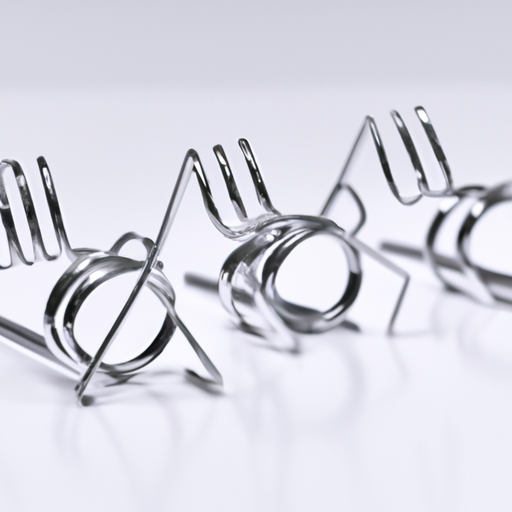
Magnetic spring switches are a type of electrical switch that uses a magnet to control the flow of electricity. These switches are commonly used in a variety of applications, including security systems, industrial machinery, and consumer electronics. The production process for magnetic spring switches involves several steps, each of which is crucial to ensuring the quality and reliability of the final product.The first step in the production process for magnetic spring switches is the design phase. During this stage, engineers and designers work together to create a detailed blueprint of the switch, including its dimensions, materials, and functionality. This design will serve as a guide for the rest of the production process, so it is important that it is accurate and thorough.Once the design is complete, the next step is to select the materials that will be used to manufacture the switch. Magnetic spring switches are typically made from a combination of metal and plastic components, so it is important to choose materials that are durable, lightweight, and conductive. The materials must also be compatible with the magnet that will be used to control the switch, as well as any other components that will be included in the final product.After the materials have been selected, the next step is to manufacture the individual components of the switch. This may involve cutting, shaping, and molding the metal and plastic parts to the correct specifications. The components must be precise and uniform in order to ensure that the switch will function properly once it is assembled.Once the components have been manufactured, the next step is to assemble the switch. This typically involves fitting the metal and plastic parts together, as well as installing the magnet and any other necessary components. The assembly process must be done carefully and accurately to ensure that the switch will work correctly once it is in use.After the switch has been assembled, it is tested to ensure that it meets the required specifications. This may involve checking the electrical conductivity of the switch, as well as its ability to respond to the magnet. Any defects or malfunctions are identified and corrected during this testing phase.Once the switch has passed all of the required tests, it is ready for packaging and distribution. The switches are typically packaged in boxes or trays to protect them during shipping and storage. They are then shipped to customers or retailers, where they can be sold and used in a variety of applications.In conclusion, the production process for magnetic spring switches is a complex and precise operation that involves several key steps. From the initial design phase to the final testing and packaging, each step is crucial to ensuring that the switches are of the highest quality and reliability. By following a careful and thorough production process, manufacturers can create magnetic spring switches that meet the needs of a wide range of industries and applications.

Magnetic products are used in a wide range of industries, from electronics to healthcare to automotive. These products rely on the properties of magnetism to function effectively, so it is crucial that they meet certain standards to ensure their quality and performance. In this article, we will discuss the product standards for magnetic products, including the materials used, manufacturing processes, and testing procedures.Materials Standards:One of the most important aspects of magnetic products is the materials used to create them. The most common materials used in magnetic products are ferromagnetic materials such as iron, nickel, and cobalt. These materials have the ability to become magnetized when exposed to a magnetic field, making them ideal for use in magnetic products.When it comes to materials standards for magnetic products, there are several key factors to consider. First and foremost, the materials used must be of high quality and purity to ensure that they have the necessary magnetic properties. This means that the materials must be free from impurities and defects that could affect their magnetic performance.In addition, the materials used in magnetic products must also be durable and resistant to corrosion. This is especially important for magnetic products that are used in harsh environments or exposed to moisture. Materials that are not properly protected against corrosion can degrade over time, leading to a loss of magnetic strength and performance.Manufacturing Standards:In addition to materials standards, there are also manufacturing standards that must be followed when producing magnetic products. These standards ensure that the products are manufactured in a consistent and reliable manner, leading to products that meet the necessary quality and performance requirements.One of the key manufacturing standards for magnetic products is the use of proper manufacturing techniques. This includes processes such as casting, sintering, and machining, which are used to create the final product. These processes must be carried out with precision and care to ensure that the product meets the necessary specifications.Another important aspect of manufacturing standards for magnetic products is quality control. This involves testing the products at various stages of production to ensure that they meet the necessary standards for magnetic performance. This can include testing the magnetic strength, durability, and resistance to corrosion of the products.Testing Standards:Testing is a crucial part of ensuring that magnetic products meet the necessary standards for quality and performance. There are several key tests that are commonly used to evaluate the magnetic properties of products, including:- Magnetic field strength testing: This test measures the strength of the magnetic field produced by the product. This is important for determining the product's magnetic performance and ensuring that it meets the necessary specifications.- Magnetic hysteresis testing: This test measures the magnetic hysteresis loop of the product, which is a measure of its magnetic properties. This test is important for evaluating the product's magnetic performance and ensuring that it meets the necessary standards.- Corrosion resistance testing: This test evaluates the product's resistance to corrosion, which is important for ensuring that the product remains durable and reliable over time. Products that are not properly protected against corrosion can degrade over time, leading to a loss of magnetic strength and performance.In conclusion, magnetic products are an essential part of many industries, and it is crucial that they meet the necessary standards for quality and performance. By following materials, manufacturing, and testing standards, manufacturers can ensure that their magnetic products are of the highest quality and reliability.
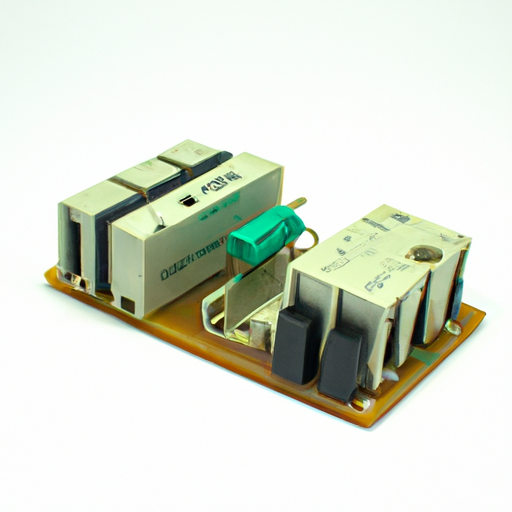
Signal relays are essential components in various electronic devices and systems, serving the purpose of controlling the flow of electrical signals. They are commonly used in applications such as telecommunications, industrial automation, automotive electronics, and more. With a wide range of signal relay models available in the market, it can be overwhelming to choose the right one for your specific needs. In this article, we will explore the top 10 signal relay popular models in the mainstream.1. Omron G6K SeriesOmron is a well-known brand in the relay industry, and the G6K series is one of their popular signal relay models. These relays are compact in size, high in performance, and suitable for various applications such as telecommunications, measurement equipment, and more. The G6K series offers a wide range of contact configurations and coil voltages to meet different requirements.2. Panasonic TX SeriesPanasonic is another reputable brand that offers high-quality signal relays, and the TX series is one of their top-selling models. These relays are known for their reliability, long lifespan, and low power consumption. The TX series is widely used in applications such as automotive electronics, industrial control systems, and more.3. TE Connectivity OJE SeriesTE Connectivity is a leading manufacturer of signal relays, and the OJE series is one of their popular models. These relays are compact in size, high in performance, and suitable for high-density applications. The OJE series offers a wide range of contact configurations, coil voltages, and switching capacities to meet different requirements.4. Fujitsu FTR-K1 SeriesFujitsu is a well-known brand in the relay industry, and the FTR-K1 series is one of their top-selling signal relay models. These relays are known for their high reliability, long lifespan, and low power consumption. The FTR-K1 series is widely used in applications such as telecommunications, industrial automation, and more.5. Coto Technology 9000 SeriesCoto Technology is a reputable manufacturer of signal relays, and the 9000 series is one of their popular models. These relays are known for their high performance, reliability, and long lifespan. The 9000 series offers a wide range of contact configurations, coil voltages, and switching capacities to meet different requirements.6. NEC EA2 SeriesNEC is a well-known brand in the relay industry, and the EA2 series is one of their top-selling signal relay models. These relays are compact in size, high in performance, and suitable for various applications such as telecommunications, measurement equipment, and more. The EA2 series offers a wide range of contact configurations and coil voltages to meet different requirements.7. ABB CR-M SeriesABB is a leading manufacturer of signal relays, and the CR-M series is one of their popular models. These relays are known for their high reliability, long lifespan, and low power consumption. The CR-M series is widely used in applications such as industrial control systems, automotive electronics, and more.8. Schneider Electric RXM SeriesSchneider Electric is a reputable brand that offers high-quality signal relays, and the RXM series is one of their top-selling models. These relays are compact in size, high in performance, and suitable for high-density applications. The RXM series offers a wide range of contact configurations, coil voltages, and switching capacities to meet different requirements.9. Siemens V230 SeriesSiemens is a well-known brand in the relay industry, and the V230 series is one of their popular signal relay models. These relays are known for their high reliability, long lifespan, and low power consumption. The V230 series is widely used in applications such as telecommunications, industrial automation, and more.10. Honeywell RY SeriesHoneywell is a reputable manufacturer of signal relays, and the RY series is one of their popular models. These relays are known for their high performance, reliability, and long lifespan. The RY series offers a wide range of contact configurations, coil voltages, and switching capacities to meet different requirements.In conclusion, signal relays are essential components in various electronic devices and systems, and choosing the right model is crucial for the overall performance of your application. The top 10 signal relay popular models mentioned in this article are known for their high quality, reliability, and performance, making them ideal choices for a wide range of applications. Whether you are looking for a compact relay for high-density applications or a high-power relay for industrial control systems, there is a model available to meet your specific requirements.
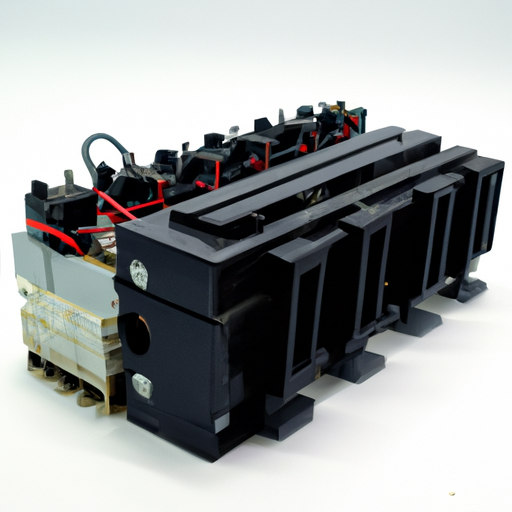
Power relays are essential components in various electrical systems, providing a reliable way to control the flow of electricity. These products offer a range of advantages that make them a popular choice for a wide range of applications. In this article, we will explore the benefits of power relay products and why they are an important part of modern electrical systems.1. VersatilityOne of the key advantages of power relay products is their versatility. These products can be used in a wide range of applications, from simple on/off control to more complex switching functions. Power relays are available in various configurations, including single-pole, double-pole, and multi-pole designs, making them suitable for a wide range of voltage and current requirements. This versatility makes power relays a popular choice for a wide range of applications, including industrial automation, HVAC systems, and automotive electronics.2. ReliabilityReliability is another key advantage of power relay products. These products are designed to provide reliable switching performance over a long service life, ensuring that electrical systems operate smoothly and efficiently. Power relays are built to withstand high levels of electrical current and voltage, making them suitable for demanding applications where reliability is critical. Additionally, power relays are designed to operate in a wide range of environmental conditions, including high temperatures, humidity, and vibration, further enhancing their reliability.3. SafetySafety is a top priority in any electrical system, and power relay products are designed with safety in mind. These products are built to meet strict safety standards and regulations, ensuring that they provide safe and reliable operation in a wide range of applications. Power relays are designed with features such as arc suppression, overcurrent protection, and thermal overload protection to prevent electrical faults and ensure safe operation. Additionally, power relays are often equipped with status indicators and diagnostic features to help identify potential issues before they become a safety hazard.4. Energy efficiencyPower relay products are designed to provide efficient control of electrical systems, helping to reduce energy consumption and lower operating costs. These products are built with low power consumption and high efficiency in mind, ensuring that they provide reliable switching performance while minimizing energy waste. Power relays are often used in energy management systems to control the flow of electricity and optimize energy usage, helping to reduce overall energy consumption and lower utility bills.5. Easy installation and maintenancePower relay products are designed for easy installation and maintenance, making them a convenient choice for electrical system designers and installers. These products are available in a range of mounting options, including panel mount, DIN rail mount, and PCB mount, making it easy to integrate them into existing electrical systems. Power relays are also designed with features such as plug-in terminals and quick-connect options, making them easy to install and replace when needed. Additionally, power relays are often equipped with diagnostic features and status indicators to help identify and troubleshoot issues quickly and efficiently.In conclusion, power relay products offer a range of advantages that make them an essential component in modern electrical systems. From their versatility and reliability to their safety features and energy efficiency, power relays provide a reliable and efficient way to control the flow of electricity in a wide range of applications. Whether used in industrial automation, HVAC systems, or automotive electronics, power relay products are a convenient and cost-effective solution for controlling electrical systems.
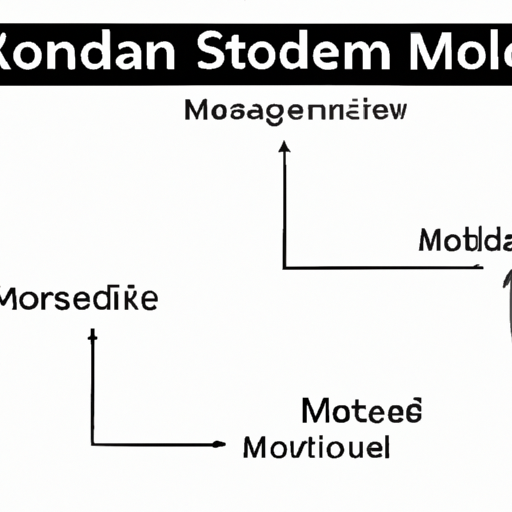
Groove is a popular brand known for its stylish and functional products, particularly its line of smartwatches and fitness trackers. With a wide range of models to choose from, it can be overwhelming to decide which one is right for you. In this article, we will explore the differences between mainstream Groove models to help you make an informed decision.1. Groove Watch 1 vs. Groove Watch 2The Groove Watch 1 and Groove Watch 2 are two of the brand's most popular smartwatches. The main difference between the two models is the design and features. The Groove Watch 1 has a more traditional round face design, while the Groove Watch 2 has a sleeker, more modern square face design.In terms of features, the Groove Watch 2 offers more advanced health and fitness tracking capabilities, including a heart rate monitor, sleep tracking, and GPS tracking. It also has a longer battery life and is water-resistant up to 50 meters, making it ideal for swimmers and outdoor enthusiasts.On the other hand, the Groove Watch 1 is more budget-friendly and offers basic smartwatch features such as notifications, music control, and customizable watch faces. It is a great option for those looking for a simple and stylish smartwatch without all the bells and whistles.2. Groove Fit vs. Groove Fit ProThe Groove Fit and Groove Fit Pro are two popular fitness trackers from the brand. The main difference between the two models is the display and features. The Groove Fit has a smaller, monochrome display, while the Groove Fit Pro has a larger, color touchscreen display.In terms of features, the Groove Fit Pro offers more advanced health and fitness tracking capabilities, including a heart rate monitor, blood oxygen saturation monitor, and stress tracking. It also has built-in GPS tracking and a longer battery life, making it ideal for serious athletes and fitness enthusiasts.On the other hand, the Groove Fit is more budget-friendly and offers basic fitness tracking features such as step counting, calorie tracking, and sleep monitoring. It is a great option for those looking for a simple and affordable fitness tracker to help them stay active and healthy.3. Groove Sense vs. Groove Sense ProThe Groove Sense and Groove Sense Pro are two popular smart scales from the brand. The main difference between the two models is the design and features. The Groove Sense has a more basic, minimalist design, while the Groove Sense Pro has a sleeker, more modern design with a larger display.In terms of features, the Groove Sense Pro offers more advanced health tracking capabilities, including body composition analysis, muscle mass measurement, and hydration level monitoring. It also has a longer battery life and can sync with the Groove app to provide personalized health insights and recommendations.On the other hand, the Groove Sense is more budget-friendly and offers basic weight tracking features. It is a great option for those looking for a simple and affordable smart scale to help them track their weight and stay motivated on their health and fitness journey.In conclusion, Groove offers a wide range of smartwatches, fitness trackers, and smart scales to suit every lifestyle and budget. By understanding the differences between mainstream Groove models, you can choose the right product that meets your needs and helps you achieve your health and fitness goals. Whether you're a casual user looking for basic features or a serious athlete looking for advanced tracking capabilities, Groove has a model for you.
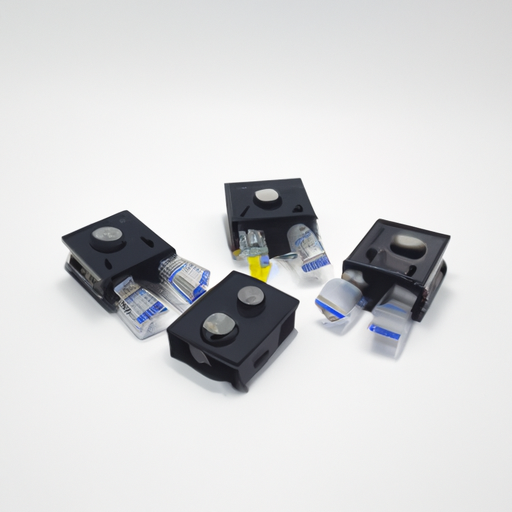
When it comes to product training for relay sockets, there are several key considerations that should be taken into account in order to ensure that users are able to effectively and safely use the product. Relay sockets are an essential component in many electrical systems, and proper training is crucial to prevent accidents and ensure optimal performance. In this article, we will discuss some important factors to consider when developing a product training program for relay sockets.1. Understanding the product: The first step in developing a product training program for relay sockets is to ensure that users have a thorough understanding of the product itself. This includes understanding the different types of relay sockets available, their features and functions, and how they are used in electrical systems. Users should also be familiar with the various components of a relay socket and how they work together to control the flow of electricity.2. Safety considerations: Safety should always be a top priority when it comes to product training, especially when dealing with electrical components like relay sockets. Users should be trained on how to safely install, operate, and maintain relay sockets to prevent accidents and injuries. This includes proper handling of the product, understanding safety precautions, and knowing how to troubleshoot common issues that may arise.3. Installation and setup: Proper installation and setup of relay sockets are essential for optimal performance. Users should be trained on how to correctly install the relay socket in an electrical system, including proper wiring techniques and connections. They should also be familiar with any specific requirements or guidelines for installation provided by the manufacturer.4. Troubleshooting and maintenance: Even with proper installation, relay sockets may encounter issues over time that require troubleshooting and maintenance. Users should be trained on how to identify common problems with relay sockets, such as loose connections or faulty components, and how to address them effectively. They should also be educated on the importance of regular maintenance to ensure the longevity and reliability of the product.5. Compatibility and integration: Relay sockets are often used in conjunction with other electrical components, such as relays, switches, and control systems. Users should be trained on how to properly integrate relay sockets into these systems, ensuring compatibility and optimal performance. They should also be familiar with any specific requirements or considerations for integrating relay sockets with other components.6. Product updates and advancements: As technology evolves, relay sockets may undergo updates or advancements that improve their performance or features. Users should be kept informed of any updates or changes to the product, and provided with training on how to adapt to these changes. This may include new features, functions, or compatibility requirements that users need to be aware of.7. Hands-on training and demonstrations: One of the most effective ways to train users on relay sockets is through hands-on training and demonstrations. This allows users to see the product in action, practice installation and setup procedures, and troubleshoot common issues in a controlled environment. Hands-on training can help reinforce key concepts and ensure that users are confident in their ability to use the product effectively.In conclusion, product training for relay sockets is essential to ensure that users are able to safely and effectively use the product in electrical systems. By considering the factors outlined above, manufacturers can develop a comprehensive training program that equips users with the knowledge and skills they need to successfully install, operate, and maintain relay sockets. Proper training not only enhances user safety and performance but also contributes to the overall success and satisfaction of the product.
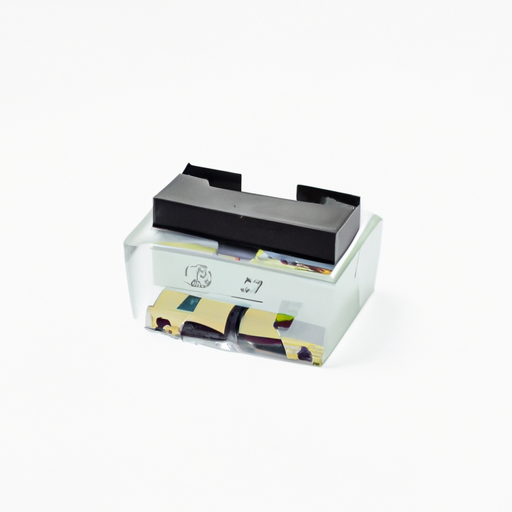
Solid state relays (SSRs) are electronic switching devices that have become increasingly popular in a wide range of applications due to their numerous advantages over traditional electromechanical relays. These advantages include faster switching speeds, longer lifespan, lower power consumption, and higher reliability. In this article, we will explore the key product features of solid state relays and discuss how they can benefit various industries and applications.One of the most important features of solid state relays is their fast switching speeds. Unlike electromechanical relays, which rely on physical contacts to open and close circuits, SSRs use semiconductor devices such as thyristors or transistors to control the flow of current. This allows SSRs to switch on and off much faster than traditional relays, making them ideal for applications that require rapid response times.Another key feature of solid state relays is their long lifespan. Because SSRs do not have any moving parts, they are not subject to the wear and tear that can affect electromechanical relays. This results in a longer operational life for SSRs, making them a cost-effective solution for applications that require frequent switching.Solid state relays also offer lower power consumption compared to electromechanical relays. SSRs typically have lower control currents and do not require a continuous power supply to maintain their state, which can lead to significant energy savings over time. This makes SSRs an environmentally friendly option for applications that require high efficiency and low power consumption.In addition to their fast switching speeds, long lifespan, and low power consumption, solid state relays also offer higher reliability than traditional relays. Because SSRs do not have any mechanical parts that can fail, they are less prone to malfunctions and are more resistant to shock and vibration. This makes SSRs a reliable choice for critical applications where downtime is not an option.Solid state relays are also compact and lightweight, making them easy to install and integrate into existing systems. Their small size and low profile make them ideal for applications where space is limited, such as in industrial control panels, HVAC systems, and medical equipment.One of the key advantages of solid state relays is their ability to switch both AC and DC loads. Unlike electromechanical relays, which are typically designed for either AC or DC applications, SSRs can switch both types of loads with ease. This versatility makes SSRs a versatile solution for a wide range of applications, from motor control to lighting control to power distribution.Solid state relays also offer improved safety features compared to traditional relays. SSRs typically have built-in protection circuits that can detect overcurrent, overvoltage, and overtemperature conditions, and automatically shut off the relay to prevent damage to the load or the relay itself. This added layer of protection makes SSRs a safer option for applications where safety is a top priority.Overall, solid state relays offer a wide range of product features that make them an attractive choice for a variety of applications. From their fast switching speeds and long lifespan to their low power consumption and high reliability, SSRs provide numerous benefits that can help improve the performance and efficiency of systems in industries such as industrial automation, HVAC, medical, and more. With their compact size, versatile switching capabilities, and advanced safety features, solid state relays are a versatile and reliable solution for a wide range of applications.
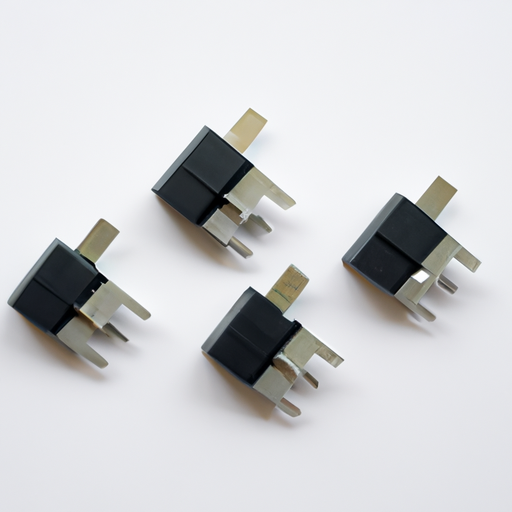
Solid state relays (SSRs) have been gaining popularity in various industries due to their numerous advantages over traditional electromechanical relays. These advantages include faster switching speeds, longer lifespan, lower power consumption, and higher reliability. As a result, the market outlook for solid state relays is very promising, with steady growth expected in the coming years.One of the key factors driving the growth of the solid state relay market is the increasing demand for automation in various industries. SSRs are widely used in industrial automation applications such as motor control, heating and cooling systems, and lighting control. The ability of SSRs to switch on and off rapidly makes them ideal for controlling high-speed processes in industrial settings. As more industries adopt automation to improve efficiency and productivity, the demand for solid state relays is expected to increase.Another factor contributing to the growth of the solid state relay market is the rising adoption of renewable energy sources such as solar and wind power. SSRs are commonly used in solar inverters and wind turbines to control the flow of electricity and protect the system from overloads. With the global shift towards clean energy sources, the demand for solid state relays in the renewable energy sector is expected to grow significantly in the coming years.The automotive industry is another key market for solid state relays, particularly in electric vehicles (EVs) and hybrid vehicles. SSRs are used in EVs to control the flow of electricity between the battery and the motor, as well as in charging systems. With the increasing popularity of EVs and the growing focus on reducing carbon emissions, the demand for solid state relays in the automotive sector is expected to rise.The healthcare industry is also a significant market for solid state relays, particularly in medical imaging equipment such as MRI machines and CT scanners. SSRs are used in these devices to control the power supply and ensure precise and reliable operation. As the demand for advanced medical imaging equipment continues to grow, so too will the demand for solid state relays in the healthcare sector.In addition to these key industries, solid state relays are also used in a wide range of other applications, including consumer electronics, telecommunications, and aerospace. The versatility and reliability of SSRs make them suitable for a variety of applications, driving their adoption across different sectors.Despite the promising outlook for the solid state relay market, there are some challenges that could potentially hinder its growth. One of the main challenges is the higher cost of solid state relays compared to electromechanical relays. While the initial investment in SSRs may be higher, the long-term benefits in terms of reliability and lifespan often outweigh the upfront cost. Additionally, advancements in technology and manufacturing processes are expected to drive down the cost of solid state relays in the future, making them more affordable for a wider range of applications.Another challenge facing the solid state relay market is the issue of compatibility with existing systems. As more industries transition from electromechanical relays to solid state relays, compatibility issues may arise, particularly in older systems that were not designed to work with SSRs. However, manufacturers are continuously working to develop solutions that address these compatibility issues and make the transition to solid state relays as seamless as possible.Overall, the market outlook for solid state relays is very positive, with steady growth expected in the coming years. The increasing demand for automation, renewable energy, electric vehicles, and advanced medical equipment is driving the adoption of SSRs across various industries. While there are challenges to overcome, the numerous advantages of solid state relays make them a compelling choice for a wide range of applications. As technology continues to advance and manufacturing costs decrease, the solid state relay market is poised for continued growth and innovation in the years to come.
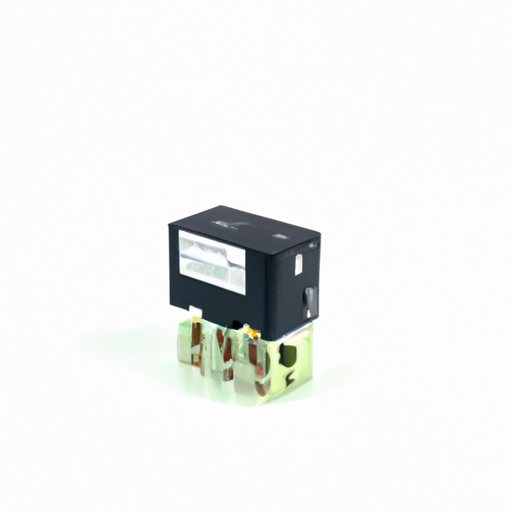
Solid state relays (SSRs) are electronic switching devices that are used to control electrical loads without the use of moving parts. They offer several advantages over traditional electromechanical relays, including faster switching speeds, longer lifespan, and reduced electromagnetic interference. As a result, SSRs have become increasingly popular in a wide range of applications, including industrial automation, HVAC systems, and medical equipment.There are several popular solid state relay product models on the market today, each with its own unique features and specifications. In this article, we will take a closer look at some of the most popular SSR models and discuss their key characteristics.1. Crydom DRA SeriesThe Crydom DRA Series is a popular choice for industrial applications due to its high current rating and robust design. These SSRs are available in single and three-phase configurations, with current ratings ranging from 10A to 125A. The DRA Series features a built-in snubber network for improved performance and reliability, as well as LED status indicators for easy monitoring. These SSRs are also available with optional heatsinks for enhanced thermal management.2. Omron G3NA SeriesThe Omron G3NA Series is another popular choice for industrial applications, thanks to its compact size and high switching frequency. These SSRs are available in single and three-phase configurations, with current ratings ranging from 5A to 40A. The G3NA Series features a built-in zero-crossing circuit for precise control of AC loads, as well as a built-in varistor for overvoltage protection. These SSRs are also available with optional mounting brackets for easy installation.3. Opto 22 MP SeriesThe Opto 22 MP Series is a versatile solid state relay that is suitable for a wide range of applications, including HVAC systems and lighting control. These SSRs are available in single and three-phase configurations, with current ratings ranging from 3A to 25A. The MP Series features a rugged design with a high dielectric strength, making it ideal for harsh industrial environments. These SSRs are also available with optional thermal pads for improved heat dissipation.4. Carlo Gavazzi RM SeriesThe Carlo Gavazzi RM Series is a popular choice for HVAC and building automation applications, thanks to its high reliability and long lifespan. These SSRs are available in single and three-phase configurations, with current ratings ranging from 10A to 75A. The RM Series features a compact design with a DIN rail mounting option for easy installation. These SSRs are also available with optional LED status indicators for quick diagnostics.5. Panasonic AQH SeriesThe Panasonic AQH Series is a high-performance solid state relay that is suitable for a wide range of applications, including medical equipment and test instruments. These SSRs are available in single and dual configurations, with current ratings ranging from 1A to 40A. The AQH Series features a low off-state leakage current for improved energy efficiency, as well as a built-in snubber network for reduced electromagnetic interference. These SSRs are also available with optional screw terminals for easy wiring.In conclusion, solid state relays are an essential component in modern electrical systems, offering fast and reliable switching of electrical loads. There are several popular SSR product models on the market today, each with its own unique features and specifications. Whether you are looking for a high-current industrial relay or a compact relay for HVAC applications, there is a solid state relay model to suit your needs. Consider the key characteristics of each model discussed in this article to find the best SSR for your specific application.

The production process of motor drive boards is a crucial step in the manufacturing of various electronic devices, including electric vehicles, industrial machinery, and consumer electronics. These boards are responsible for controlling the speed, direction, and power of electric motors, making them essential components in a wide range of applications.The mainstream motor drive board production process involves several key steps, including design, prototyping, testing, and mass production. Each of these steps is essential to ensure the quality, reliability, and performance of the motor drive boards. In this article, we will explore each of these steps in detail to provide a comprehensive overview of the production process.DesignThe first step in the production process of motor drive boards is the design phase. During this phase, engineers and designers work together to create a detailed schematic of the board, including the layout of components, connections, and power distribution. The design phase also involves selecting the appropriate components, such as microcontrollers, power transistors, and sensors, to meet the specific requirements of the application.Once the initial design is complete, it is typically reviewed by a team of experts to ensure that it meets the necessary specifications and standards. Any necessary revisions or modifications are made at this stage to optimize the performance and reliability of the motor drive board.PrototypingAfter the design phase is complete, the next step in the production process is prototyping. Prototyping involves creating a physical prototype of the motor drive board to test its functionality and performance. This step is essential to identify any potential issues or defects in the design before moving on to mass production.During the prototyping phase, engineers conduct thorough testing of the board, including functional testing, thermal testing, and reliability testing. Any issues that are identified during testing are addressed and resolved to ensure that the final product meets the required specifications and standards.TestingOnce the prototype has been successfully tested and validated, the next step in the production process is testing. Testing involves conducting rigorous quality control checks to ensure that the motor drive boards meet the necessary performance, reliability, and safety standards. This step is crucial to identify any defects or issues that may have been missed during the prototyping phase.During testing, motor drive boards are subjected to a series of tests, including functional testing, thermal testing, and environmental testing. These tests help to ensure that the boards can operate reliably in a variety of conditions and environments. Any boards that fail to meet the required standards are rejected and sent back for further analysis and troubleshooting.Mass ProductionOnce the motor drive boards have successfully passed all testing and quality control checks, they are ready for mass production. Mass production involves manufacturing a large quantity of boards using automated assembly processes to ensure consistency and efficiency. This step typically involves the use of specialized equipment, such as pick-and-place machines, soldering machines, and inspection systems, to assemble and test the boards.During mass production, strict quality control measures are implemented to ensure that each board meets the required specifications and standards. This includes conducting regular inspections, testing samples from each batch, and monitoring the production process to identify any issues or defects. Any boards that fail to meet the required standards are rejected and either reworked or discarded.In conclusion, the production process of motor drive boards is a complex and multi-step process that requires careful planning, design, testing, and quality control. By following these steps, manufacturers can ensure that the motor drive boards meet the necessary performance, reliability, and safety standards for a wide range of applications.

The market size of motor drive boards is a crucial factor to consider for businesses operating in the electronics industry. Motor drive boards are essential components in a wide range of applications, including robotics, automation, electric vehicles, and industrial machinery. These boards are responsible for controlling the speed, direction, and torque of electric motors, making them vital for the efficient operation of various devices.The global market size of motor drive boards is expected to reach $7.2 billion by 2025, according to a report by MarketsandMarkets. This growth is driven by the increasing demand for energy-efficient and high-performance motor control solutions across industries. The adoption of electric vehicles, the rise of industrial automation, and the growing popularity of smart home devices are some of the key factors contributing to the expansion of the motor drive board market.One of the main drivers of the market growth is the increasing focus on energy efficiency and sustainability. Motor drive boards play a crucial role in improving the energy efficiency of electric motors by controlling their speed and torque. This is particularly important in industries such as automotive, where electric vehicles are becoming more prevalent due to their lower environmental impact compared to traditional internal combustion engine vehicles.Another factor driving the market growth is the rapid advancement of technology in the electronics industry. Motor drive boards are becoming more sophisticated and capable of handling complex motor control tasks. This has led to the development of advanced features such as sensorless control, field-oriented control, and predictive maintenance, which are essential for optimizing the performance of electric motors in various applications.The automotive industry is expected to be a major contributor to the growth of the motor drive board market. The increasing adoption of electric vehicles and the development of autonomous driving technologies are driving the demand for advanced motor control solutions. Motor drive boards are essential for controlling the motors in electric vehicles, ensuring smooth acceleration, braking, and overall performance.The industrial automation sector is another key market for motor drive boards. These boards are used in a wide range of industrial machinery, such as pumps, compressors, conveyors, and robots, to control the movement and operation of electric motors. The demand for automation solutions is increasing as companies seek to improve efficiency, productivity, and safety in their manufacturing processes.The smart home market is also driving the demand for motor drive boards. These boards are used in various home appliances, such as washing machines, refrigerators, and HVAC systems, to control the motors and ensure optimal performance. With the increasing adoption of smart home devices and the Internet of Things (IoT) technology, the demand for motor drive boards is expected to grow significantly in the coming years.In conclusion, the market size of motor drive boards is expected to grow significantly in the coming years, driven by the increasing demand for energy-efficient and high-performance motor control solutions across industries. The automotive, industrial automation, and smart home sectors are expected to be key drivers of this growth. Businesses operating in the electronics industry should pay close attention to the evolving market trends and technological advancements in motor drive boards to capitalize on the opportunities presented by this growing market.

Dealer is a comprehensive software solution designed to streamline and optimize the operations of automotive dealerships. With a wide range of features and functionalities, Dealer offers a one-stop solution for managing inventory, sales, customer relationships, and more. In this article, we will explore the key product features of Dealer and how they can benefit automotive dealerships.Inventory ManagementOne of the core features of Dealer is its robust inventory management system. Dealers can easily track and manage their inventory of vehicles, parts, and accessories in real-time. The system allows dealers to add new inventory, update existing listings, and track the status of each vehicle from acquisition to sale. With Dealer, dealerships can ensure that their inventory is always up-to-date and easily accessible to sales staff and customers.Sales ManagementDealer also offers a comprehensive sales management module that helps dealerships track and manage their sales processes. From lead generation to closing the deal, Dealer provides tools to streamline the sales process and improve efficiency. Sales staff can easily track leads, schedule appointments, and follow up with customers to ensure a smooth and successful sales process. With Dealer, dealerships can increase sales productivity and improve customer satisfaction.Customer Relationship ManagementAnother key feature of Dealer is its customer relationship management (CRM) system. Dealer helps dealerships build and maintain strong relationships with their customers by providing tools to track customer interactions, manage customer data, and personalize communication. With Dealer, dealerships can easily track customer preferences, purchase history, and service records to provide personalized service and build customer loyalty.Service ManagementIn addition to sales and inventory management, Dealer also offers a service management module to help dealerships streamline their service operations. Dealers can easily schedule service appointments, track service requests, and manage service technicians with Dealer. The system also provides tools to track service history, manage warranties, and generate service reports. With Dealer, dealerships can improve service efficiency and customer satisfaction.Reporting and AnalyticsDealer offers robust reporting and analytics tools to help dealerships track performance, identify trends, and make informed business decisions. Dealers can easily generate reports on sales, inventory, service, and customer data to gain insights into their operations. With Dealer's analytics tools, dealerships can track key performance indicators, monitor trends, and identify areas for improvement. By leveraging data-driven insights, dealerships can optimize their operations and drive business growth.Integration and CustomizationDealer is a flexible and customizable software solution that can be tailored to meet the unique needs of automotive dealerships. Dealers can easily integrate Dealer with other systems and applications to streamline their operations and improve efficiency. Dealer also offers customization options to adapt the software to specific business requirements and workflows. With Dealer, dealerships can create a tailored solution that meets their needs and drives business success.In conclusion, Dealer is a comprehensive software solution designed to streamline and optimize the operations of automotive dealerships. With its robust features and functionalities, Dealer offers a one-stop solution for managing inventory, sales, customer relationships, and more. By leveraging Dealer's features, dealerships can improve efficiency, increase sales productivity, and enhance customer satisfaction. Dealer is a powerful tool for automotive dealerships looking to drive business growth and success.
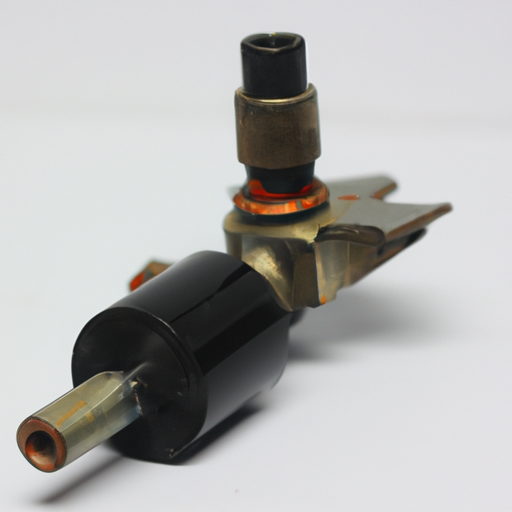
The actuator industry is experiencing significant growth and innovation as technology continues to advance. Actuators are devices that are used to control or move mechanisms in a variety of applications, from industrial machinery to consumer electronics. As the demand for automation and smart technology increases, the actuator industry is expected to see continued growth in the coming years.One of the key trends in the actuator industry is the increasing use of electric actuators. Electric actuators are becoming more popular due to their efficiency, precision, and ease of use. Unlike traditional hydraulic or pneumatic actuators, electric actuators do not require external power sources or complex control systems, making them ideal for a wide range of applications. Electric actuators are also more environmentally friendly, as they do not rely on hydraulic fluids or compressed air.Another trend in the actuator industry is the growing demand for actuators with integrated sensors and feedback systems. These actuators are able to provide real-time data on their performance, allowing for more precise control and monitoring. Integrated sensors also enable predictive maintenance, reducing downtime and increasing efficiency. As industries continue to adopt Industry 4.0 technologies, actuators with integrated sensors will become increasingly important for optimizing production processes.The rise of automation and robotics is also driving growth in the actuator industry. Actuators are essential components in robotic systems, enabling precise movement and control. As industries seek to increase efficiency and productivity, the demand for actuators for robotics applications is expected to grow. Actuators with advanced features such as high speed, high precision, and high torque are particularly in demand for robotics applications.In addition to electric actuators, there is also a growing interest in other types of actuators, such as piezoelectric actuators and shape memory alloy actuators. Piezoelectric actuators are known for their high precision and fast response times, making them ideal for applications that require fine control. Shape memory alloy actuators are able to change shape in response to temperature changes, making them suitable for applications such as medical devices and aerospace systems.The actuator industry is also seeing advancements in materials and design. Manufacturers are developing actuators that are smaller, lighter, and more durable than ever before. These advancements are enabling actuators to be used in a wider range of applications, from wearable devices to automotive systems. Materials such as carbon fiber and titanium are being used to create actuators that are both strong and lightweight, while advanced coatings and seals are improving durability and reliability.As the actuator industry continues to evolve, there are several challenges that manufacturers will need to address. One of the key challenges is ensuring compatibility and interoperability between different types of actuators and control systems. As industries adopt more complex automation systems, it will be important for actuators to be able to communicate and work together seamlessly.Another challenge is the need for increased cybersecurity measures to protect actuators from cyber threats. As more devices become connected to the internet, there is a growing risk of cyber attacks that could compromise the performance and safety of actuators. Manufacturers will need to invest in robust cybersecurity measures to ensure the integrity of their products.Overall, the actuator industry is poised for continued growth and innovation in the coming years. With advancements in technology, materials, and design, actuators are becoming more versatile and efficient than ever before. As industries continue to embrace automation and smart technology, the demand for actuators will only continue to increase. Manufacturers that are able to adapt to these trends and challenges will be well-positioned to succeed in this dynamic and evolving industry.

Stepping motors are a type of electric motor that is commonly used in various industries for precise positioning and control applications. These motors operate by converting electrical pulses into mechanical movements, making them ideal for applications that require accurate and repeatable motion control. In recent years, the market for stepping motors has been growing steadily, driven by the increasing demand for automation and robotics in various industries.One of the key market policies that stepping motor manufacturers need to consider is the need for high-quality products that meet the stringent requirements of their customers. Stepping motors are often used in critical applications where precision and reliability are paramount, such as in medical devices, industrial automation, and robotics. As such, manufacturers need to ensure that their products meet the highest standards of quality and performance to meet the needs of their customers.Another important market policy for stepping motor manufacturers is the need to stay competitive in a rapidly evolving market. With advancements in technology and increasing competition from both domestic and international players, manufacturers need to constantly innovate and improve their products to stay ahead of the curve. This includes investing in research and development to develop new and improved stepping motor designs, as well as adopting new manufacturing processes to increase efficiency and reduce costs.In addition to product quality and innovation, stepping motor manufacturers also need to consider market trends and customer preferences when developing their products. For example, the growing trend towards miniaturization and energy efficiency in various industries has led to an increased demand for compact and energy-efficient stepping motors. Manufacturers need to be aware of these trends and develop products that meet the changing needs of their customers.Furthermore, stepping motor manufacturers need to consider the regulatory environment in which they operate. Depending on the industry and application, stepping motors may be subject to various regulations and standards that govern their design, manufacturing, and use. Manufacturers need to ensure that their products comply with these regulations to avoid any legal issues and maintain the trust of their customers.Overall, the market for stepping motors is a dynamic and competitive one, driven by the increasing demand for automation and precision motion control in various industries. To succeed in this market, stepping motor manufacturers need to focus on product quality, innovation, market trends, and regulatory compliance to meet the needs of their customers and stay ahead of the competition. By adopting these market policies, stepping motor manufacturers can position themselves for success in this growing market.
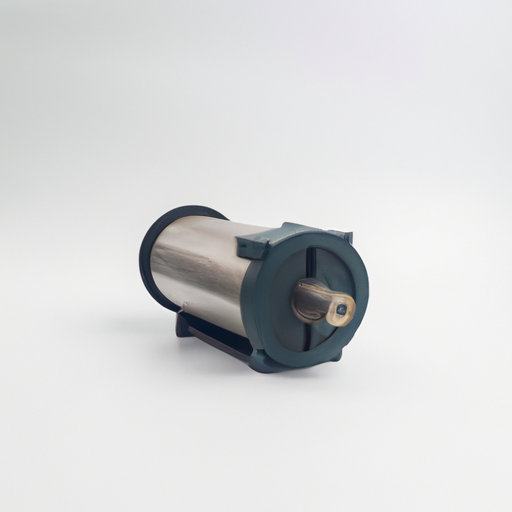
Stepping motors are a type of electric motor that converts electrical pulses into mechanical movement. They are widely used in various applications such as robotics, 3D printers, CNC machines, and more. Stepping motors have several unique features that make them ideal for these applications. In this article, we will explore the product features of stepping motors in detail.1. Precise Positioning: One of the key features of stepping motors is their ability to move in precise increments. Unlike other types of motors that rely on continuous rotation, stepping motors move in discrete steps. This makes them ideal for applications that require accurate positioning, such as in robotics and automation systems.2. High Torque at Low Speeds: Stepping motors are known for their high torque at low speeds. This makes them ideal for applications that require precise control over the speed and position of the motor. Stepping motors can provide high torque even at low speeds, making them suitable for applications that require high precision and accuracy.3. Open-loop Control: Stepping motors operate in an open-loop control system, which means that they do not require feedback from sensors to determine their position. Instead, the motor controller sends a series of electrical pulses to the motor, which moves in discrete steps. This simplifies the control system and reduces the overall cost of the system.4. Low Maintenance: Stepping motors are known for their reliability and low maintenance requirements. Unlike other types of motors that require regular maintenance and lubrication, stepping motors are relatively maintenance-free. This makes them ideal for applications where downtime must be minimized.5. High Resolution: Stepping motors have a high resolution, which means that they can move in very small increments. This makes them ideal for applications that require precise control over the position of the motor. Stepping motors can move in steps as small as 1.8 degrees, providing high resolution and accuracy.6. Easy to Control: Stepping motors are easy to control using a simple motor controller. The controller sends a series of electrical pulses to the motor, which moves in discrete steps. This makes it easy to program the motor to move to a specific position or speed, making them ideal for applications that require precise control.7. Low Cost: Stepping motors are relatively inexpensive compared to other types of motors. This makes them ideal for applications where cost is a factor. Stepping motors provide high torque, precision, and reliability at a low cost, making them a popular choice for a wide range of applications.8. Quiet Operation: Stepping motors operate quietly compared to other types of motors. This makes them ideal for applications where noise must be minimized, such as in medical devices or consumer electronics. Stepping motors provide smooth and quiet operation, making them suitable for a wide range of applications.In conclusion, stepping motors have several unique features that make them ideal for a wide range of applications. Their precise positioning, high torque at low speeds, open-loop control, low maintenance requirements, high resolution, easy control, low cost, and quiet operation make them a popular choice for robotics, automation systems, 3D printers, CNC machines, and more. Stepping motors provide high performance, reliability, and precision at a low cost, making them a versatile and cost-effective solution for various applications.
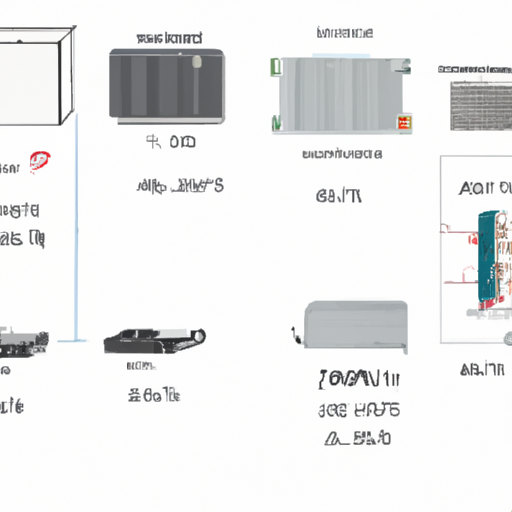
When it comes to electrical products, DC and AC are two of the most common types of power sources used in various applications. DC, or direct current, flows in one direction and is commonly used in batteries and electronic devices. AC, or alternating current, changes direction periodically and is the type of power that is delivered to homes and businesses through power lines.In the mainstream market, there are a wide range of DC and AC products available to consumers. These products vary in terms of their parameters, such as voltage, current, frequency, and power rating. Understanding these parameters is essential for selecting the right product for a specific application.Voltage is one of the most important parameters to consider when choosing a DC or AC product. Voltage is the electrical potential difference between two points in a circuit and is measured in volts (V). DC products typically have a fixed voltage output, such as 12V or 24V, while AC products have a variable voltage output, such as 120V or 240V.Current is another important parameter to consider when selecting a DC or AC product. Current is the flow of electric charge in a circuit and is measured in amperes (A). DC products typically have a fixed current output, while AC products have a variable current output that depends on the load connected to the circuit.Frequency is a parameter that is specific to AC products. Frequency is the number of cycles per second of an AC waveform and is measured in hertz (Hz). In the United States, the standard frequency for AC power is 60Hz, while in Europe and other parts of the world, the standard frequency is 50Hz.Power rating is a parameter that indicates the maximum amount of power that a DC or AC product can deliver. Power rating is typically measured in watts (W) and is calculated by multiplying the voltage and current of the product. For example, a product with a voltage of 12V and a current of 5A would have a power rating of 60W.In the mainstream market, there are a wide range of DC and AC products available that cater to different applications and requirements. Some common DC products include batteries, power supplies, and solar panels, while common AC products include appliances, lighting fixtures, and power tools.When selecting a DC or AC product, it is important to consider the specific parameters that are required for the application. For example, if you are looking for a power supply for a computer, you would need to consider the voltage and current requirements of the computer components. Similarly, if you are looking for a lighting fixture for your home, you would need to consider the voltage and power rating of the fixture.In conclusion, understanding the parameters of DC and AC products is essential for selecting the right product for a specific application. By considering factors such as voltage, current, frequency, and power rating, consumers can make informed decisions when purchasing electrical products. With a wide range of DC and AC products available in the mainstream market, consumers have plenty of options to choose from to meet their electrical needs.

Communication is a fundamental aspect of human interaction that plays a crucial role in our daily lives. It is the process of exchanging information, ideas, thoughts, and feelings between individuals or groups through various mediums such as speech, writing, gestures, and body language. Effective communication is essential for building relationships, resolving conflicts, sharing knowledge, and achieving common goals.Communication can be categorized into different types based on the medium used and the purpose of the interaction. Verbal communication involves the use of spoken words to convey messages, while non-verbal communication includes gestures, facial expressions, and body language. Written communication involves the use of written words to convey information through letters, emails, reports, and other written documents. Visual communication involves the use of images, charts, and graphs to convey information visually.Effective communication requires both the sender and the receiver to be actively engaged in the process. The sender must encode the message in a clear and concise manner, while the receiver must decode the message accurately to understand its meaning. Communication barriers such as language differences, cultural differences, and noise can hinder the effectiveness of communication and lead to misunderstandings.Communication skills are essential for success in both personal and professional settings. Good communication skills can help individuals build strong relationships, resolve conflicts, and collaborate effectively with others. In the workplace, effective communication is crucial for conveying instructions, sharing information, and fostering teamwork. Employers often look for candidates with strong communication skills when hiring new employees.There are several key components of effective communication that individuals can work on to improve their communication skills. These include active listening, empathy, clarity, and feedback. Active listening involves paying attention to the speaker and responding appropriately to their message. Empathy involves understanding and sharing the feelings of others to build rapport and trust. Clarity involves expressing ideas in a clear and concise manner to avoid misunderstandings. Feedback involves providing constructive feedback to help others improve their communication skills.In today's digital age, technology has revolutionized the way we communicate with each other. Social media platforms, messaging apps, and video conferencing tools have made it easier for us to connect with others and share information instantly. However, the rise of digital communication has also led to challenges such as misinterpretation of messages, lack of personal connection, and information overload.Despite the advancements in technology, face-to-face communication remains an essential aspect of human interaction. Face-to-face communication allows individuals to build trust, establish rapport, and convey emotions effectively through verbal and non-verbal cues. In a world where virtual communication is becoming increasingly prevalent, it is important to prioritize face-to-face interactions to maintain strong relationships and connections with others.In conclusion, communication is a vital aspect of human interaction that plays a crucial role in our daily lives. Effective communication skills are essential for building relationships, resolving conflicts, and achieving common goals. By improving our communication skills and embracing face-to-face interactions, we can enhance our personal and professional relationships and lead more fulfilling lives.

Pointing devices are an essential component of any computer system, allowing users to interact with their devices in a more intuitive and efficient manner. One popular type of pointing device is the pointing can be configured/optional oscillator, which offers users a high level of customization and flexibility in their pointing experience. In this article, we will explore the key product categories of pointing can be configured/optional oscillators and how they can enhance the user experience.1. Wireless Pointing Devices:One of the key product categories of pointing can be configured/optional oscillators is wireless pointing devices. These devices offer users the freedom to move around without being tethered to their computer system. Wireless pointing devices use radio frequency or Bluetooth technology to connect to the computer, allowing for a more seamless and clutter-free user experience. These devices are ideal for users who prefer a more flexible and ergonomic setup, as they can easily switch between different workstations or devices without the need for cables.2. Ergonomic Pointing Devices:Another key product category of pointing can be configured/optional oscillators is ergonomic pointing devices. These devices are designed to reduce strain and discomfort on the user's hand and wrist, making them ideal for users who spend long hours working on their computer. Ergonomic pointing devices come in various shapes and sizes, allowing users to find the perfect fit for their hand size and grip style. These devices often feature customizable buttons and sensitivity settings, allowing users to tailor their pointing experience to their specific needs.3. Gaming Pointing Devices:Gaming pointing devices are another popular product category of pointing can be configured/optional oscillators. These devices are designed specifically for gamers, offering high levels of precision and responsiveness for fast-paced gaming action. Gaming pointing devices often feature customizable buttons, adjustable sensitivity settings, and ergonomic designs to enhance the gaming experience. These devices are ideal for gamers who require precise control and quick reflexes in competitive gaming environments.4. Multi-functional Pointing Devices:Multi-functional pointing devices are a versatile product category of pointing can be configured/optional oscillators. These devices combine the functionality of multiple pointing devices into one, offering users a more streamlined and efficient user experience. Multi-functional pointing devices often feature a combination of a mouse, trackball, touchpad, and joystick, allowing users to switch between different input methods seamlessly. These devices are ideal for users who require a versatile pointing solution for various tasks and applications.5. Customizable Pointing Devices:Customizable pointing devices are a key product category of pointing can be configured/optional oscillators that offer users a high level of customization and personalization. These devices allow users to customize various aspects of their pointing experience, such as button assignments, sensitivity settings, and scrolling behavior. Customizable pointing devices often come with software that allows users to create custom profiles and settings for different tasks and applications. These devices are ideal for users who require a tailored pointing experience to suit their specific needs and preferences.In conclusion, pointing can be configured/optional oscillators offer users a wide range of product categories to choose from, each catering to different needs and preferences. Whether you are looking for a wireless, ergonomic, gaming, multi-functional, or customizable pointing device, there is a product category that will suit your requirements. By selecting the right pointing device for your needs, you can enhance your user experience and improve your productivity and efficiency when interacting with your computer system.
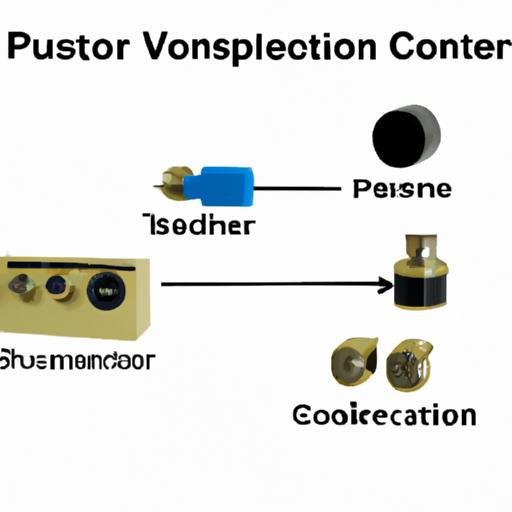
Voltage-controlled oscillators (VCOs) are essential components in many electronic devices and systems, providing a variable frequency output that can be controlled by an external voltage signal. VCO pressure control oscillators are a specialized type of VCO that are used in pressure control systems to generate precise oscillations that are proportional to changes in pressure. In this article, we will explore the components and modules that make up a VCO pressure control oscillator, as well as their applications and benefits.Components of a VCO Pressure Control Oscillator1. Voltage-Controlled Oscillator (VCO): The heart of a VCO pressure control oscillator is the voltage-controlled oscillator itself. This component generates an output signal with a frequency that is proportional to the input voltage signal. The VCO can be designed to operate over a wide frequency range, making it suitable for a variety of pressure control applications.2. Pressure Sensor: The pressure sensor is a critical component in a VCO pressure control oscillator system. It measures the pressure of the system and converts it into an electrical signal that can be used to control the VCO. The pressure sensor must be accurate and reliable to ensure that the oscillator responds correctly to changes in pressure.3. Control Circuitry: The control circuitry is responsible for processing the output signal from the pressure sensor and adjusting the input voltage to the VCO accordingly. This circuitry may include amplifiers, filters, and other components to ensure that the oscillator operates smoothly and accurately.4. Frequency Divider: In some VCO pressure control oscillator systems, a frequency divider may be used to divide the output frequency of the VCO to a lower frequency range. This can be useful for certain applications where a lower frequency output is required.5. Output Stage: The output stage of the VCO pressure control oscillator is responsible for conditioning the output signal for use in the rest of the system. This may include amplification, filtering, and other processing to ensure that the signal is clean and stable.Modules of a VCO Pressure Control Oscillator1. Frequency Modulation: Many VCO pressure control oscillators include frequency modulation capabilities, allowing the output frequency to be modulated by an external signal. This can be useful for applications where precise control over the oscillation frequency is required.2. Temperature Compensation: Temperature can have a significant impact on the performance of a VCO pressure control oscillator. To ensure stability and accuracy, many oscillators include temperature compensation modules that adjust the output frequency based on changes in temperature.3. Phase-Locked Loop (PLL): Some VCO pressure control oscillators may include a phase-locked loop to ensure that the output frequency remains locked to a reference signal. This can be useful for applications where precise synchronization is required.4. Digital Control Interface: In modern VCO pressure control oscillators, a digital control interface may be included to allow for easy integration with digital control systems. This interface may include communication protocols such as SPI or I2C for easy interfacing with microcontrollers and other digital devices.Applications of VCO Pressure Control OscillatorsVCO pressure control oscillators have a wide range of applications across various industries. Some common applications include:1. Pressure Control Systems: VCO pressure control oscillators are commonly used in pressure control systems to generate oscillations that are proportional to changes in pressure. This can be useful for applications such as pressure monitoring, leak detection, and flow control.2. Medical Devices: VCO pressure control oscillators are used in medical devices such as ventilators and anesthesia machines to control pressure and flow rates. These devices require precise control over pressure and flow, making VCO pressure control oscillators an ideal choice.3. Industrial Automation: VCO pressure control oscillators are used in industrial automation systems to control pressure in pneumatic and hydraulic systems. These systems require precise control over pressure to ensure smooth operation and safety.4. Aerospace and Defense: VCO pressure control oscillators are used in aerospace and defense applications for pressure control in aircraft, missiles, and other systems. These applications require high reliability and accuracy, making VCO pressure control oscillators a critical component.Benefits of VCO Pressure Control OscillatorsThere are several benefits to using VCO pressure control oscillators in pressure control systems:1. Precision: VCO pressure control oscillators offer precise control over oscillation frequency, allowing for accurate pressure control in a wide range of applications.2. Flexibility: VCO pressure control oscillators can be easily adjusted to operate over a wide frequency range, making them suitable for a variety of pressure control applications.3. Reliability: VCO pressure control oscillators are designed to be reliable and stable, ensuring consistent performance over time.4. Integration: VCO pressure control oscillators can be easily integrated into existing systems, making them a versatile choice for pressure control applications.In conclusion, VCO pressure control oscillators are essential components in pressure control systems, offering precise control over oscillation frequency that is proportional to changes in pressure. By understanding the components and modules that make up a VCO pressure control oscillator, as well as their applications and benefits, engineers and designers can make informed decisions when selecting oscillators for their pressure control systems.

Independent programmer products play a crucial role in practical applications across various industries. These products are developed by individual programmers or small teams, rather than large corporations, and offer unique solutions to specific problems. In this article, we will explore the role of independent programmer products in practical applications, their benefits, challenges, and future prospects.Independent programmer products, also known as indie software, are software applications or tools created by independent developers. These products can range from mobile apps to desktop software, web applications, plugins, and more. What sets indie software apart from mainstream software is its focus on niche markets, innovative features, and personalized user experiences.One of the key roles of independent programmer products is to fill gaps in the market that are not addressed by mainstream software. Independent developers have the flexibility to experiment with new ideas, technologies, and design concepts that may not be feasible for larger corporations. As a result, indie software often offers unique features and functionalities that cater to specific user needs.For example, indie mobile apps like Todoist and Pocket have gained popularity for their simplicity, ease of use, and focus on productivity. These apps provide users with a streamlined experience for managing tasks, saving articles, and organizing information, which may not be available in mainstream productivity tools.Furthermore, independent programmer products play a vital role in driving innovation and pushing boundaries in the software industry. Independent developers are not bound by corporate constraints or profit-driven motives, allowing them to explore new technologies, experiment with unconventional ideas, and challenge traditional norms.For instance, indie game developers have revolutionized the gaming industry with innovative gameplay mechanics, immersive storytelling, and stunning visuals. Games like Stardew Valley, Hollow Knight, and Celeste have garnered critical acclaim and commercial success, showcasing the creativity and talent of independent developers.Moreover, independent programmer products contribute to the democratization of software development by empowering individuals to create and distribute their own software solutions. With the rise of online platforms like GitHub, Indie Hackers, and Product Hunt, independent developers can showcase their projects, collaborate with like-minded peers, and reach a global audience.The accessibility of development tools, resources, and communities has lowered the barriers to entry for aspiring indie developers, enabling them to turn their ideas into reality and compete with established software companies. This democratization of software development fosters diversity, creativity, and innovation in the industry.Despite their numerous benefits, independent programmer products also face challenges in practical applications. One of the main challenges is the lack of resources, funding, and marketing support compared to mainstream software companies. Independent developers often have limited budgets, time, and manpower to develop, promote, and maintain their products.As a result, indie software may struggle to gain visibility, attract users, and generate revenue in a competitive market dominated by big players. Marketing and distribution are critical aspects of the success of independent programmer products, requiring developers to leverage social media, content marketing, SEO, and other strategies to reach their target audience.Additionally, independent programmer products may face technical challenges such as compatibility issues, security vulnerabilities, and scalability limitations. Developing and maintaining software requires continuous updates, bug fixes, and support to ensure a seamless user experience and protect against cyber threats.Furthermore, independent developers may lack the expertise, resources, and infrastructure to handle complex technical issues, customer inquiries, and legal matters. As a result, indie software may struggle to meet industry standards, comply with regulations, and provide reliable customer support, which can impact its reputation and credibility.Despite these challenges, independent programmer products continue to thrive and make a significant impact in practical applications across various industries. The resilience, creativity, and passion of independent developers drive innovation, diversity, and user-centric design in the software industry.Looking ahead, the future prospects of independent programmer products are promising, with advancements in technology, collaboration, and entrepreneurship shaping the landscape. The growing demand for personalized, niche software solutions, coupled with the rise of remote work, digital transformation, and online marketplaces, create opportunities for independent developers to innovate and succeed.In conclusion, independent programmer products play a vital role in practical applications by filling gaps in the market, driving innovation, empowering individuals, and democratizing software development. Despite facing challenges such as limited resources, marketing constraints, and technical issues, indie software continues to thrive and shape the future of the software industry. With the right support, community, and determination, independent developers can create impactful, sustainable products that benefit users and inspire the next generation of software innovation.